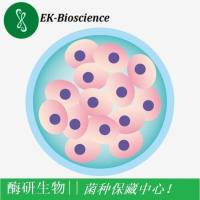Proteomic Approaches for the Study of Electrical Synapses and Associated Protein-Interaction Complexes
互联网
509
Recent advances in the identification and analysis of protein–protein interaction complexes associated with synapses and synaptic
proteins deepened not only our insights into the molecular composition and dynamic structural makeup of interneuronal connections
but contributed also significantly to our understanding of the molecular and mechanistic aspects underlying functional plasticity
in neuronal networks. In particular proteome analytical tools, combining traditional isolation protocols with modern mass
spectrometric approaches, were utilized successfully for the molecular analysis of chemical synapses and other neuronal subcellular
structures revealing new and exciting insights into the temporal and spatial changes of the proteins composing or associated
with for example synaptic vesicles, synaptic membranes, or postsynaptic densities (PSDs). Proteomic approaches may thus offer
also a chance to gain valuable insights into the so far elusive molecular composition of electrical synapses, the Cinderella
fated and long neglected little brethren of “classical” chemical synapses. In this chapter we provide an experimental basis
of how such an analysis can be designed, with a major focus on the most abundant electrical synapse protein, connexin36.








